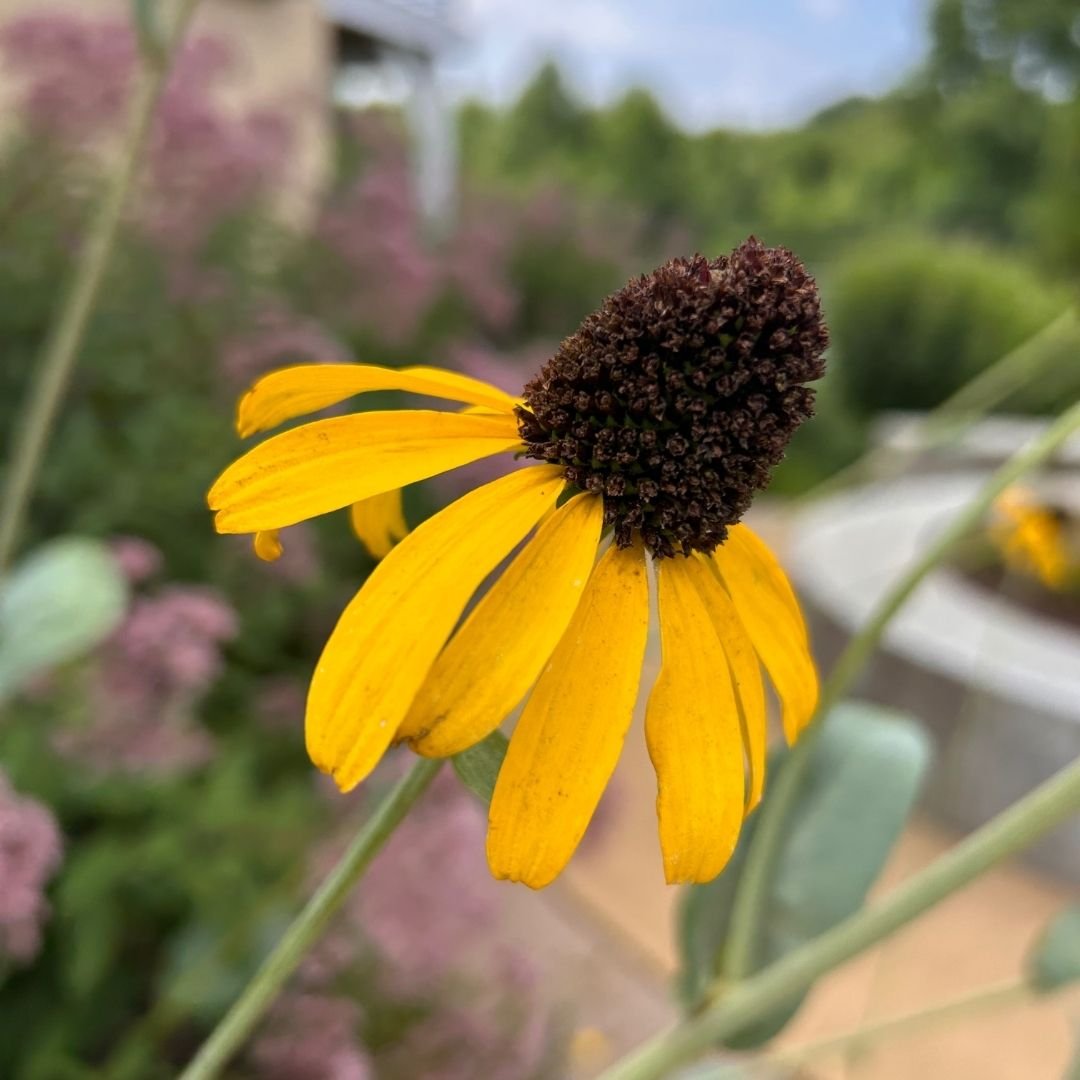Large Coneflower, the Rudbeckia with Cabbage-shaped Leaves
Discover the Beauty of this Tall Herbaceous Perennial
Large coneflower (Rudbeckia maxima) is a showstopper for gardeners looking to make a bold statement with native beauty. Unlike typical coneflowers, this striking perennial soars to 7 feet tall, creating a dramatic focal point in the landscape.
Its broad, paddle-shaped blue-green leaves form a dramatic base, while towering stems hold golden-yellow blooms with deep brown center cones, attracting pollinators and turning heads alike.
Native to the southern United States, this standout plant is perfect for those who want something unique, eye-catching, and effortlessly at home in a naturalistic garden.
Keep scrolling for garden ideas and expert tips on planting companions!
How to Grow Large Coneflower
Location: Large coneflower thrives in full sun to part shade and prefers moist, well-draining soil. It is highly adaptable and can tolerate a wide range of soil conditions, including clay and sand.
Planting: Plant large coneflower in spring or fall, spacing plants 2-3 feet apart to accommodate its large, clump-forming growth habit.
Watering: Water plants regularly during the first growing season to help establish deep roots. Once mature, large coneflower is drought-tolerant but benefits from occasional deep watering during extended dry spells. Check the U.S. Drought Monitor map for up-to-date information on drought conditions in your area.
Mulching: Apply a 2-3 inch layer of mulch around the base of the plant to help retain soil moisture and suppress weeds. Avoid piling mulch directly against the base of the plant, since this can encourage disease.
Fertilizing: Amend the soil with compost in early spring to encourage strong growth and abundant blooms.
Is Large Coneflower Deer Resistant?
Yes, large coneflower (Rudbeckia maxima) is considered deer-resistant. Its flowers and cabbage-shaped foliage are not a preferred food source for deer.
However, like most plants, it’s not entirely deer-proof! 😕
Hungry deer will eat almost anything if their preferred food sources are scarce.
To prevent damage, especially to tender young plants, consider using protective barriers like fencing or chicken wire until the shrub grows larger and becomes more established.
Garden Design Ideas for Large Coneflower
Meadow Planting: Large coneflower’s tall, naturalistic form blends beautifully into a meadow setting, adding height and movement among grasses and other flowering perennials.
Pocket Prairie: Its drought tolerance and ability to thrive in tough conditions make it a standout choice for a pocket prairie, where it provides structure and seasonal interest.
Butterfly Garden: The large, nectar-rich blooms attract a variety of butterflies, offering both a food source and a striking vertical accent.
Native Plant Garden: As a low-maintenance, Southern U.S. native, large coneflower fits seamlessly into native plant gardens in the South and supports local ecosystems.
Border Garden: With its towering stems and bold flowers, this plant makes a dramatic statement in mixed perennial borders, adding depth and contrast to the back of the border.
Island Bed: Its architectural height and bold foliage make large coneflower an eye-catching focal point in an island bed, drawing the eye from multiple angles.
Mass Planting: Planted in groups, large coneflower creates a sweeping display that is both striking and beneficial to wildlife.
Pollinator Garden: Bees, butterflies, and other pollinators flock to its blooms, making it a must-have for sustaining pollinator populations. It’s also the host plant for the larvae of the Wavy-lined Emerald moth.
Bird Garden: The large, cone-shaped seed heads provide an excellent late-season food source for goldfinches and other seed-eating birds. Let flowers dry naturally on the plant and remain in place through autumn and winter, and keep an eye out for birds feasting on the seeds!
Cottage Garden: Add height and a wild, charming touch to informal, densely planted cottage gardens with this summer-flowering perennial.
Cutting Garden: Large coneflower has long-lasting flowers on strong stems and makes a unique addition to fresh-cut flower arrangements.
Planting Companions for Large Coneflower
Heatwave Hyssop (Agastache ‘Heat Wave’)
Pale purple coneflower (Echinacea pallida)
Russian Sage (Perovskia atriplicifolia)
Purple coneflower (Echinacea purpurea)
Blazing star (Liatris spicata)
Switchgrass (Panicum virgatum)
Joe Pye weed (Eutrochium fistulosum)
Swamp milkweed (Asclepius incarnata)
Ultraviolet Tall Garden Phlox (Luminary® 'Ultraviolet' Phlox paniculata)
Speedwell (Veronica spicata)
Great Burnet (Sanguisorba officinalis)
Hubricht’s Bluestar (Amsonia hubrichtii)
Narrowleaf Mountain Mint (Pycnanthemum tenuifolium)
Large coneflower and planting companions Speedwell (right, with purple flowers), Switch Grass (center), and Joe Pye Weed (left, getting ready to flower).


